Heat acclimation prevents neurobehavioral and physiological disorders in mice exposed to chronic aircraft noise
- PMID: 41036584
- PMCID: PMC12489467
- DOI: 10.14814/phy2.70575
Heat acclimation prevents neurobehavioral and physiological disorders in mice exposed to chronic aircraft noise
Abstract
We aimed to test whether heat acclimation (HA) would protect against aircraft noise (AN)-induced neurobehavioral and physiological disorders in mice. A total of 90 adult male mice were equally divided into three groups: control (c) plus non-AN group, c plus AN group, and HA plus AN group. Neurobehavioral performances included passive avoidance tasks (to assess learning and memory function), Y-maze tests (to assess spatial memory ability), and novel object recognition tests. Physiological functions included stress responses, inflammation, and oxidative stress, which were determined biochemically. The severity of endotoxemia was determined by measuring the serum levels of lipopolysaccharide. Both gut barrier and blood-brain barrier permeability were determined by fluorescein isothiocyanate and Evans Blue dye measurement, respectively. Compared to c+non-AN mice, the c+AN mice displayed neurobehavioral disorders along with exacerbated stress reactions, gut barrier disruption, endotoxemia, blood-brain barrier disruption, and hippocampal inflammation and oxidative stress. Compared to c+AN mice, the HA+AN mice had significantly less severity of all the abovementioned behavioral and physiological impairments. These results suggest that HA counteracts neurobehavioral and physiological disorders in mice exposed to aircraft noise.
Keywords: aircraft noise; blood–brain barrier disruption; endotoxemia; gut barrier disruption; heat acclimation; hippocampus; neurobehavioral disorders.
© 2025 The Author(s). Physiological Reports published by Wiley Periodicals LLC on behalf of The Physiological Society and the American Physiological Society.
Conflict of interest statement
The authors declare no competing interests.
Figures
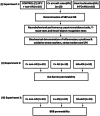
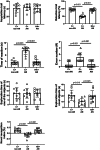
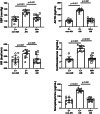
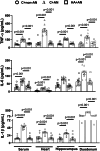

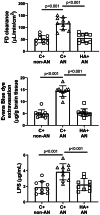
References
-
- Ait‐Belgnaoui, A. , Colom, A. , Braniste, V. , Ramalho, L. , Marrot, A. , Cartier, C. , Houdeau, E. , Theodorou, V. , & Tompkins, T. (2014). Probiotic gut effect prevents the chronic psychological stress‐induced brain activity abnormality in mice. Neurogastroenterology and Motility, 26, 510–520. 10.1111/nmo.12295 - DOI - PubMed
-
- Caldwell, A. R. , Oki, K. , Ward, S. M. , Ward, J. A. , Mayer, T. A. , Plamper, M. L. , King, M. A. , & Leon, L. R. (2021). Impact of successive exertional heat injuries on thermoregulatory and systemic inflammatory responses in mice. Journal of Applied Physiology (1985), 131, 1469–1485. 10.1152/japplphysiol.00160.2021 - DOI - PubMed
-
- Caricilli, A. M. , Picardi, P. K. , de Abreu, L. L. , Ueno, M. , Prada, P. O. , Ropelle, E. R. , Hirabara, S. M. , Castoldi, Â. , Vieira, P. , Camara, N. O. , Curi, R. , Carvalheira, J. B. , & Saad, M. J. (2011). Gut microbiota is a key modulator of insulin resistance in TLR 2 knockout mice. PLoS Biology, 9, e1001212. 10.1371/journal.pbio.1001212 - DOI - PMC - PubMed
MeSH terms
Grants and funding
- 2018ZX03/The 960th Hospital, Joint Logistics Support Force of PLA
- 1081A01/Mackay Medical University (MMU; formerly Mackay Medical College, MMC)
- 1081B09/Mackay Medical University (MMU; formerly Mackay Medical College, MMC)
- CMFHT11401/Chi Mei Medical Center
- 2019-JCJQ-ZNM-02/Basic Research Key Program, Defense Advanced Research Projects of PLA
LinkOut - more resources
Full Text Sources

